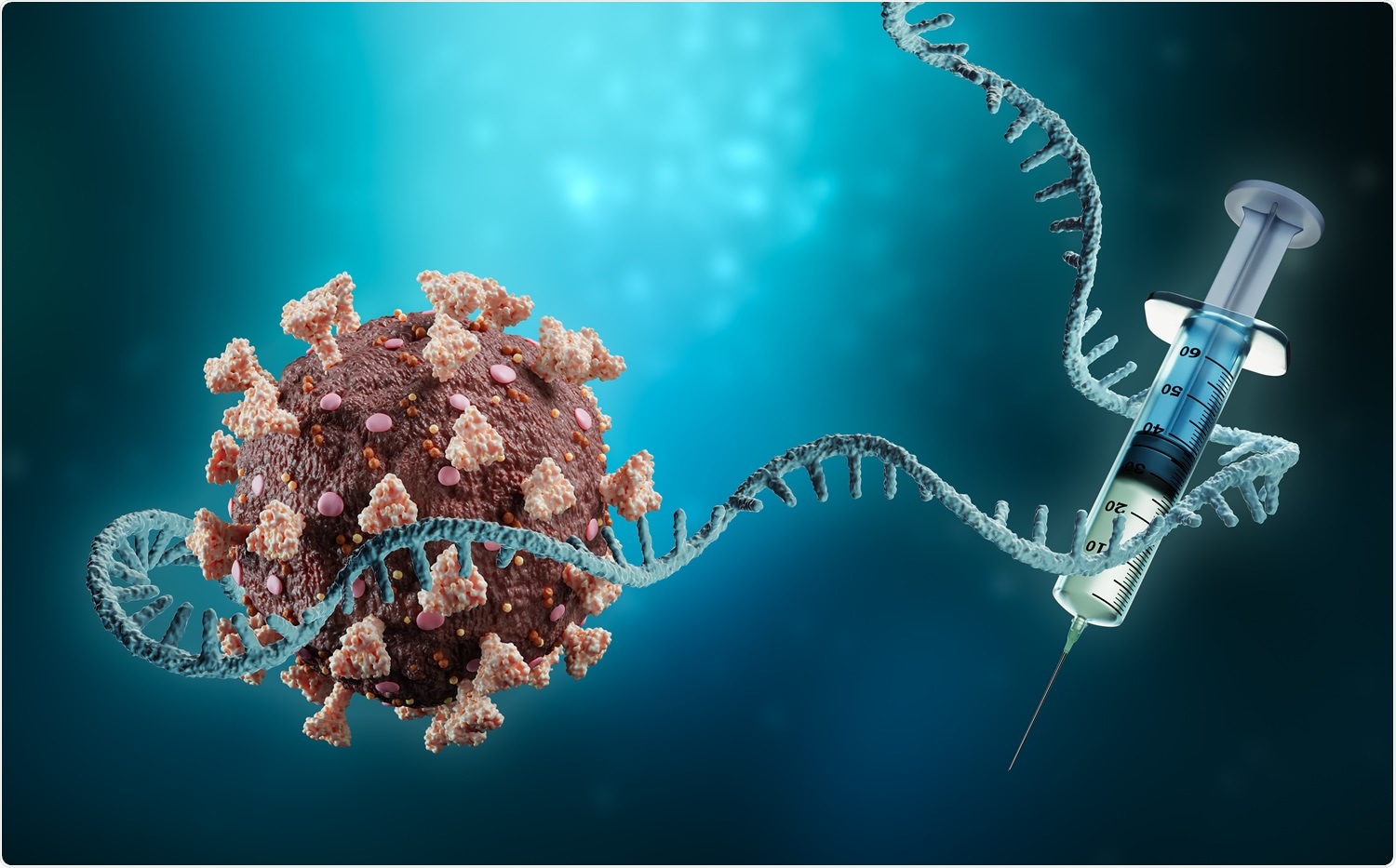Vaccination is an important strategy to prevent the transmission of various infectious diseases such as rubella, smallpox, measles, mumps, and recently, coronavirus 2019 disease (COVID-19).
Vaccines typically contain either dead or weakened virus strains, or a small part of that virus, such as a protein or nucleic acid. When you get a vaccine, your immune system identifies it as foreign. In response, it creates memory cells and antibodies that guard against future infection.
Researchers have explained that messenger RNA (mRNA) vaccines can encode the preferred antigens from an mRNA sequence. When the mRNA is inoculated, it offers specific information to the cells such that they can produce specific proteins in the cytoplasm. These proteins trigger immune responses associated with antigen-presenting cells (APCs) or antibodies/immunoglobulin. These immune cells protect the body against diseases.
A new review article published in the journal Briefings in Functional Genomics focuses on the general characteristic features and mechanisms of mRNA vaccines. Further, this review has summarized the current progress of mRNA vaccines that have been developed for wide-ranging diseases, including COVID-19 disease.

The main reasons the mRNA vaccine has been considered a strong vaccine candidate to prevent COVID-19 disease are its efficiency, cost-effectiveness, and rapid development speed.
Further, in comparison to other types of vaccines, mRNA vaccines have gained popularity owing to their characteristic features, which are most favorable for targeting infectious diseases with genetic instability.
Also, the main advantages of using mRNA as a source of antigen are its ability to induce MHC-I presentation and stimulating cytotoxic T-lymphocyte responses.
These characteristic features provide huge versatility in the types and number of antigenic determinants. Two of the main types of mRNA that are evaluated as vaccine candidates are (a) non-replicating mRNA and (b) virally derived self-amplifying mRNA.
One of the persisting issues in the development of mRNA vaccines is thermostability. Two recently developed mRNA-based COVID-19 vaccines require a steady temperature of -70°C during their storage and transportation. Such a feature limits their availability in rural areas and low-income countries. However, recently researchers have developed thermostable mRNA vaccines with a freeze-dry protocol. Scientists believe more research on the optimization of vaccine formulation may help improve the thermostability of mRNA vaccines.
Scientists have stated that epitopes are an important feature that is often ignored for enhancing the effectiveness of mRNA vaccines. These antigenic determinants are recognized by the immune system and determine the type of immune response to be triggered. Epitopes are divided into T-cell and B-cell epitopes. The T-cell epitopes are present on the surface of an APC and are attached to major histocompatibility. The B-cell epitopes are bound by immunoglobulin or antibodies. For peptide-based vaccines, the epitope-based vaccine design has been used. Two examples of epitope-based vaccines for SARS-CoV-2 are UB-612 and NVX-CoV2373.
Scientists have developed several epitope prediction models, which can be categorized into sequence-based and structure-based methods. Although the sequence-based methods have become obsolete, their concept is still being used in motif search. The neural network offers a suitable approach to study the relationships and describing non-linear data.
For epitope prediction, a support vector machine is widely used and has been demonstrated in models such as COBEPRO (linear B-cell epitope prediction model) and Pcleavage (cleavage sites prediction model). For structural models, standard computational models such as docking of peptides, knowledge-based threading algorithms, etc., are used. These epitope predictions help researchers to identify epitopes that can provide immunogenicity and cross-reactivity for a target pathogen. For many viruses, epitopes can be found in online databases, such as the Immune Epitope Database (IEDB).
Two of the mRNA-based COVID-19 vaccines have used similar immunogen design and delivery systems. They elicit immune responses which are comparable to natural viral infection. Even though both of these vaccines have shown promising efficacy in clinical trials, optimization related to epitopes may help develop more stable and effective vaccines. For example, prefusion conformation needs more factors to be maintained after inoculation, as the macromolecules could get modified by environmental parameters. Further, incorporating another immunogen (e.g., N protein) could provide an additional target for immune response. This could boost vaccine efficiency and lower the risk of mutation escape.
Even though the use of S protein in the vaccine could mimic a natural viral infection, the neutralizing antibodies and T-cells can only get attached to specific peptides. Therefore, encoding specific epitopes could enhance the stability of the mRNA vaccine. Also, in the case of extreme mutation in SARS-CoV-2’s S protein, the virus could escape immunity elicited by the currently available vaccines. It could be easier to adapt to new mutations by re-adjusting the epitopes instead of redesigning the vaccine. For vaccine designing, the use of computational models is highly advantageous because of their flexibility.
mRNA vaccines had been previously applied for preventing a range of infectious as well as non-infectious diseases such as influenza and cancer. Based on human epitope prediction models, this article illustrates how mRNA vaccine design can be improved by recent advances in bioinformatics.
- Xinhui, C. et al. (2021). Infectious disease mRNA vaccines and a review on epitope prediction for vaccine design, Briefings in Functional Genomics, elab027, https://doi.org/10.1093/bfgp/elab027, https://academic.oup.com/bfg/advance-article/doi/10.1093/bfgp/elab027/6292285
Posted in: Medical Science News | Disease/Infection News | Pharmaceutical News
Tags: Antibodies, Antigen, Bioinformatics, Cancer, Cell, Coronavirus, Coronavirus Disease COVID-19, Cytoplasm, Efficacy, Genetic, Genomics, Immune Response, Immune System, Immunoglobulin, Infectious Diseases, Influenza, Lymphocyte, Macromolecules, Measles, Mumps, Mutation, Nucleic Acid, Pathogen, Peptides, Protein, Research, RNA, Rubella, SARS, SARS-CoV-2, Smallpox, T-Cell, Vaccine, Virus

Written by
Dr. Priyom Bose
Priyom holds a Ph.D. in Plant Biology and Biotechnology from the University of Madras, India. She is an active researcher and an experienced science writer. Priyom has also co-authored several original research articles that have been published in reputed peer-reviewed journals. She is also an avid reader and an amateur photographer.
Source: Read Full Article
